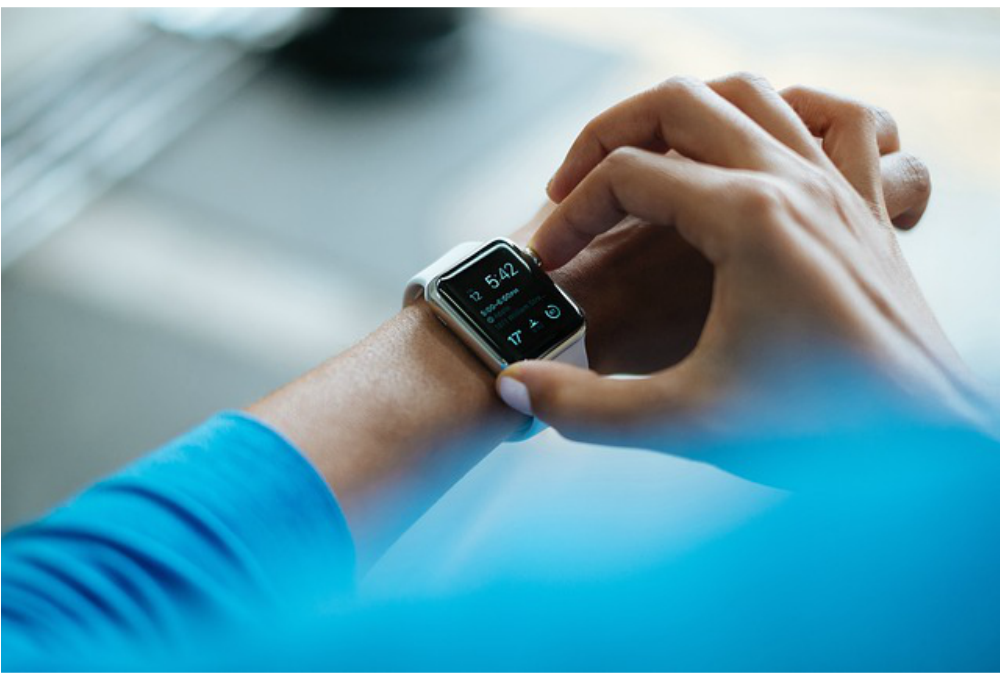Wearables are small electronic devices comprising one or more sensors that are associated with clothing or worn accessories such as watches, wristbands, glasses and jewelry. They are able to capture and process information from the physical world, while being able to interact with smartphones towards exchanging data associated with their owner’s personal context.
In recent years we have witnessed an explosion of such wearables that are purchased by people of all ages, which renders them one of the most prominent device types in the consumer Internet of Things (IoT) space. A large number of wearables enable collection of data about fitness and healthcare, which makes them ideal companions for citizens increasingly concerned with their health and well-being such athletes, older adults and patients with chronic conditions. For example the Smart Run wrist device by Adidas monitors the wearer’s heart rate and location data, while FitBit’s Flex provides real time statistics on a user’s daily fitness activity. Likewise, Nike’s Nike+ Sportwatch measures the distance traveled, as well as the pace of the wearer’s run, while the popular Apple Watch provides information on the user’s heart rate, location and speed.
 These devices provide a wide range of motivating functionalities, which help wearers stay active and adopt a healthier lifecycle. A variety of IoT applications combine their functionalities with smartphone capabilities in order to alert, advise and motivate their end-users in pleasant and ergonomic ways. In most cases these applications enable also users to store, access and process their personal data in the scope of a cloud provided by the wearable device vendor and associated ecosystem (e.g., the Adidas miCoach system for Smart Run or the iCloud platform for Apple Watches). Despite their value, these applications reveal only a small part of wearables and IoT’s potential in healthcare and fitness.
These devices provide a wide range of motivating functionalities, which help wearers stay active and adopt a healthier lifecycle. A variety of IoT applications combine their functionalities with smartphone capabilities in order to alert, advise and motivate their end-users in pleasant and ergonomic ways. In most cases these applications enable also users to store, access and process their personal data in the scope of a cloud provided by the wearable device vendor and associated ecosystem (e.g., the Adidas miCoach system for Smart Run or the iCloud platform for Apple Watches). Despite their value, these applications reveal only a small part of wearables and IoT’s potential in healthcare and fitness.
IoT provides much more and richer functionalities beyond the processing of user-context in the scope of a vendor’s ecosystem. As the number of devices that a user possesses proliferates, IoT provides the means of enhancing applications with more information. Furthermore, it is possible nowadays to combine this information with data derived from other sensors associated with a wearers’ context or location (such as temperature and air quality sensors). Moreover, the advent of IoT analytics technologies enables the processing of large amounts of wearables data, along with conventional demographics and medical data such as blood tests, cardiac tests and medical images. Also, Big Data will facilitate the cost-effective processing of all these data sets (including their historical values), as a means of deriving accurate information about a users’ behavior and activity over time, but also as means of generating knowledge and recommendations regarding the users’ condition. In the future we can also expect the enhancement of the above listed datasets with additional information such as genetic information.
Based on the combined, frequent and cost-effective analysis of all the above data sources, IoT technologies will empower entirely new services for lifestyle management, early warning of the users or even disease management recommendations that could be supervised by the users’ practitioners.
The provision and operation of such innovative services may be based on the combination of data and functionalities from more than one wearables ecosystems, as several end-users will be using devices from more than one vendor. Overall, IoT will empower a radical shift to the provision of holistic integrated fitness and healthcare services, which will provide end-to-end lifecycle management or even end-to-end disease management. In this way, we will also see a shift of the competition from the development and provision of the best device to the provision of the most personalized ergonomic and innovative integrated service.
Apart from improving end-users’ lifestyle and well-being, future IoT services on wearable devices will positively impact other healthcare stakeholders:
• Medical experts and health professionals who will be provided with rich and accurate data that will facilitate disease prognosis, diagnosis and treatment.
• Clinical research organisations which could gain access to more and accurate data about their research at a lower effort and cost.
• Pharmaceutical companies which will be able to access data that will facilitate them in the development of personalised products and services.
• Health Insurance companies which will be able to design personalised programmes and services for their customers taking into account factual information about end-users lifestyle and needs.
IoT will not be merely improving lifestyles, but rather promises to transform the entire healthcare ecosystem. In coming years we will be witnessing this transformation through the adoption and wider use of IoT technologies, but also through accompanying this technology revolution with the ever important social and regulatory elements that will ensure citizens’ privacy and data protection.
John Soldatos is an Internet of Things, Cloud Computing, JavaEE consultant, writer and published author.
All information/views/opinions expressed in this article are that of the author. This Website may or may not agree with the same.
